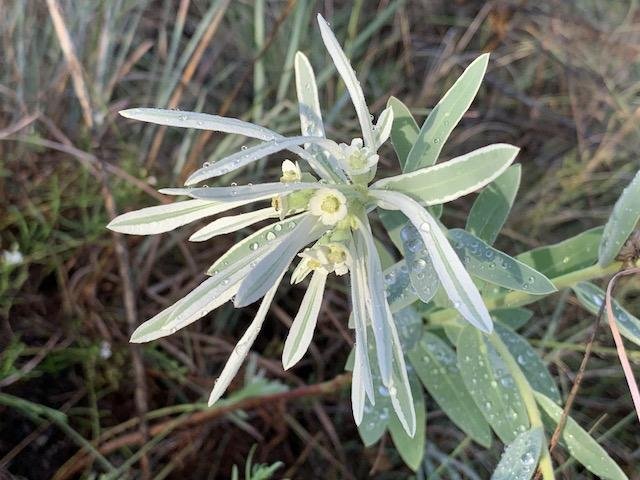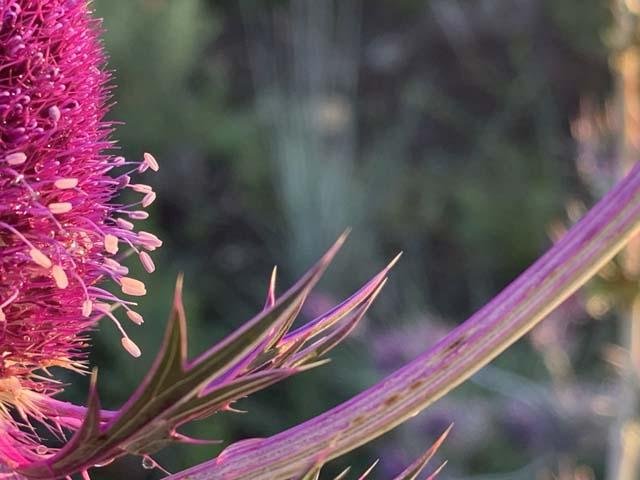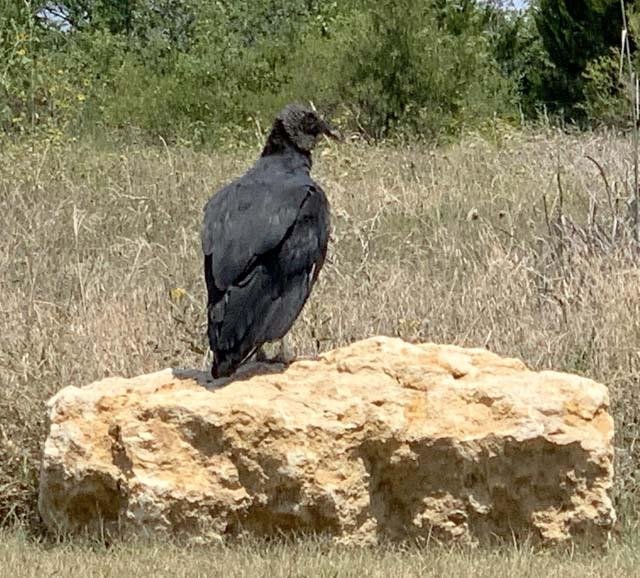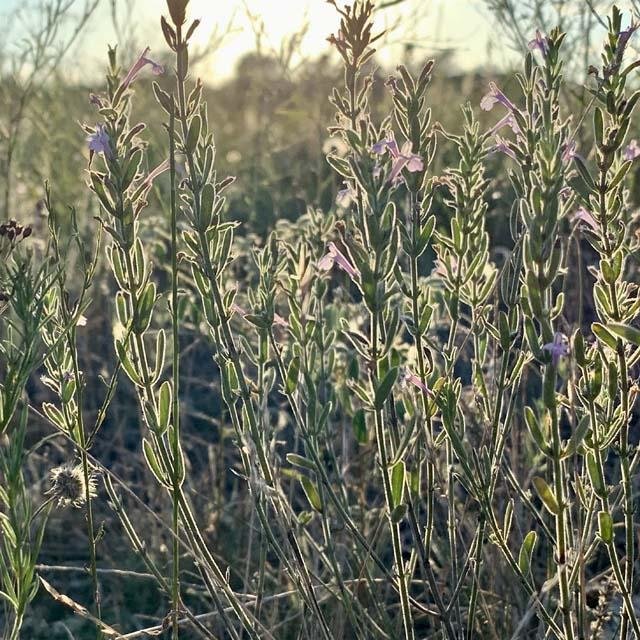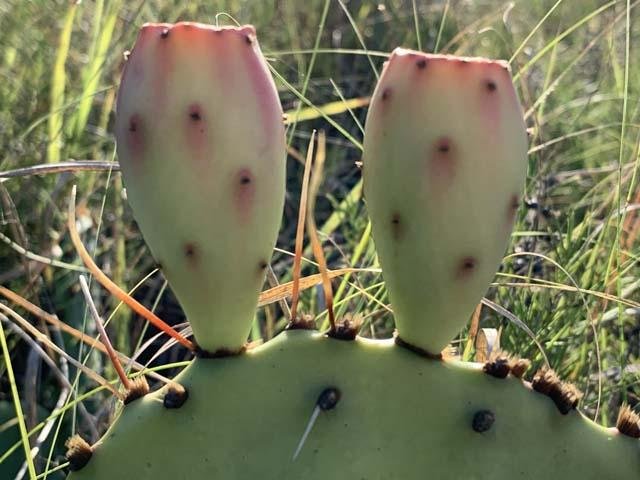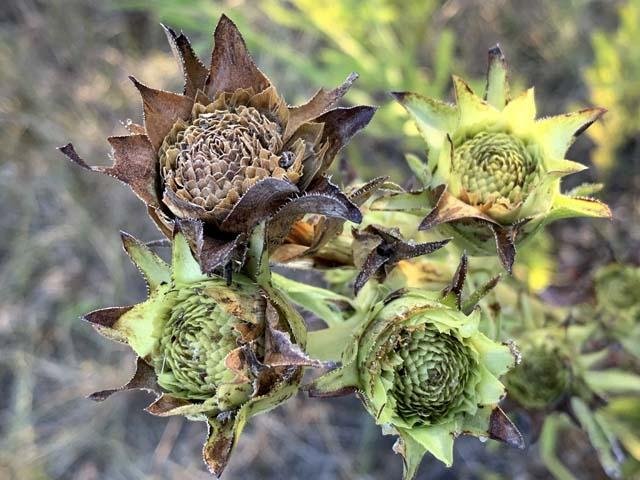Prairie Notes #177 - After the Rain
Prairie Notes are monthly photo/journal observations from Tandy Hills Natural Area by Founder/Director, Don Young. They include field reports, flora and fauna sightings, and more, mixed with a scoop of dry humor and a bit of philosophy.
They are available free to all who get on the FOTHNA email list.
After the Rain
Prairie Notes #177
September 1, 2021
01) After the Rain
02) Field Report - August
03) New Species - August
04) Parks For Pollinators Bioblitz - September
05) PrairieSky / StarParty - September
06) Giving Day - September 23rd
07) Prairie Bookshelf
08) Prairie Proverb - Henry David Thoreau
01) After the Rain
I was sitting at my computer on August 29, composing this issue of Prairie Notes, dreading the predicted two more weeks of hot summer days with no rain in sight. I was also recovering from a dreadful summer cold that had kept me homebound for most of August. Out of the blue came a thunderclap that shattered my concentration. An hour later 2" of much needed rain had fallen on Tandy HIlls.
That was enough to pull me out of my summer doldrums. As soon as the rain stopped the sun came out and I grabbed my hat and camera, pulled on my big mud boots and headed out to witness the magic that happens after the rain.
Just a few steps in I was greeted by a beautifully wild Cottontail Rabbit, shaking off raindrops as she foraged under some wet trees. We acknowledged each others existence and I headed down the trail passing some lovely, False Gaura and Snow on the Prairie plants glistening with water drops in the setting sun. My main destination was a nice stand of Eryngo, currently in its prime and a reliable place to find a variety of insects inhabiting it's universe of thorny leaves and pine-appley-flowers.
Soon enough I was eyball to eyeball with a few Preying Mantis, and their prey of bees, bugs and flies. I also found myself marveling at the Eryngo plants themselves, so boldly complex and colorful, dripping with pollen and H2O diamonds. It's no wonder insects are so attracted to Eryngo.
It was then I saw a vivid, Green Lynx Spider, possibly the same one that shed it's skin a month ago. (See PN # 176) That's when the drama began. As you may recall from last years (PN #165: A Sleepin' Bee Done Told Me), Green Lynx Spiders prey on sleeping Bumble Bees. That was exactly the case this evening. I saw the bee first just as it snuggled up to the Eryngo flower. It was instantly asleep and motionless as the sun hit the horozon. Then I noticed the spider inching closer to the bee, one spiky leg at a time. Then IT stopped moving. Hmm, I read that they attacked in a flash of speed. Duly noted.
As dusk descended over me, I hunkered down to watch the spider move in for the kill. Alas, the spider was in no hurry and it was getting dark so, after a few minutes I decided to come back next moring. On my way out I passed some enchanting, thumb-sized mushrooms lined up on a log and a spider web the size of a sheet. Nature is truly amazing, especially after a rain.
Next morning was bight and sunny. I hiked straight to the spot of the expected spider / bee crime scene to take a look. Surprisingly, the spider had not moved a muscle since the night before, one of his legs still extended towards the bee. The bee was gone. That was probably it buzzing around the Eryngo flowers nearby. So, in this case, the situation was reversed, and it was the the spider who was sleeping while the bee lived another day.
DY
02) Field Report - August
August is always a challenging month to be outside in North Texas especially if you have a summer cold like I did. But striking out for the prairie on a hot summer evening proved to be just the medicine I needed. Despite the parched landscape, there were a few species blooming such as Eryngo, False Gaura and Two-leafed Senna. Not far away, butterflies and other pollinators were drifting across the hills searching for those elusive few wildflowers. And of course, the autumn prairie grasses are thriving.
As I write this on August 29, rain is pouring down on Tandy Hills. That's good since we are in for a long stretch of summertime temps for the next couple of weeks before fall starts settling in. The autumnal equinox is September 22. Come on in and watch it happen.
03) New Species - August
There were 47 new species added in August, bringing the new count to 1585. Most were observed and recorded by, Sam Kieschnick.
One notable but, rather unpretentious-looking new species is, the Beaded Lacewing. Its larvae feed on termites. They are notable for the WAY they immobilize their prey: by “releasing a vapor-phase toxicant.” Put bluntly, they fart on their prey, striking down several at a time. It brings new meaning to the axiom, "Silent but deadly." Read more about that HERE.
See the Lacewing and a few other notables below and the Tandy Hills iNat Project Page HERE: https://www.inaturalist.org/projects/tandy-hills-natural-area-stratford-...
04) Parks For Pollinators Bioblitz
The City of Fort Worth Park & Recreation Department (FW-PARD) is sponsoring a citywide bioblitz during the month of September. Participants are invited to help FW-PARD create a snapshot of the woildlife at city parks. There are a few special events planned for various parks around town. See the full list at the city website HERE. No special events are planned at Tandy Hills but you are welcome to come on in and add to the iNaturalsit database for Tandy Hills. Kudos to the City for recognizing the natural world that exists beyond soccer fields and sidewalks.
05) PrairieSky / StarParty - September
A small-ish crowd and 8 astronomers attended the hot as heck August party. The next star party is Saturday, September 11. Pam Kloepfer of partner, FW Astronomical Society, offers the following sky report fopr September:
"Even though autumn begins in late September, it does not mean the end of the summer constellations! We will continue to see them heading west in the coming harvest months. With the sun setting earlier as the month marches on, September nights will be getting longer for star gazing! Scorpius and the Teapot will still be visible low in the southwest. Cygnus the Swan will be overhead with its famous double star, Albireo. A telescope will reveal that Albireo is a beautiful double star of gold and blue. The star Deneb in Cygnus is one of the Summer Triangle along with Vega in Lyra and Altair in Aquila, also easily visible overhead. The Great Square of Pegasus will rise in the east. Stellar Saturn and Jovian Jupiter will shine-on all night and all month. Behold their stunning rings, dark bands, and extraneous moons through the lens of an eyepiece! The Moon will be a waxing crescent on September 11."
06) Giving Day - September 23rd
North Texas Giving Day is September 23rd. Early Giving starts today. Please remember Friends of Tandy Hills when making donations. Check out our profile and make an early donation HERE:
https://www.northtexasgivingday.org/friends-of-tandy-hills-natural-area-inc
07) Prairie Bookshelf
08) Prairie Proverb - Henry David Thoreau
“Now comes good sailing.”
Prairie Notes© is the official newsletter of Friends of Tandy Hills Natural Area, a 501 (c)(3) non-profit organization. All content by Don Young except where otherwise noted.




